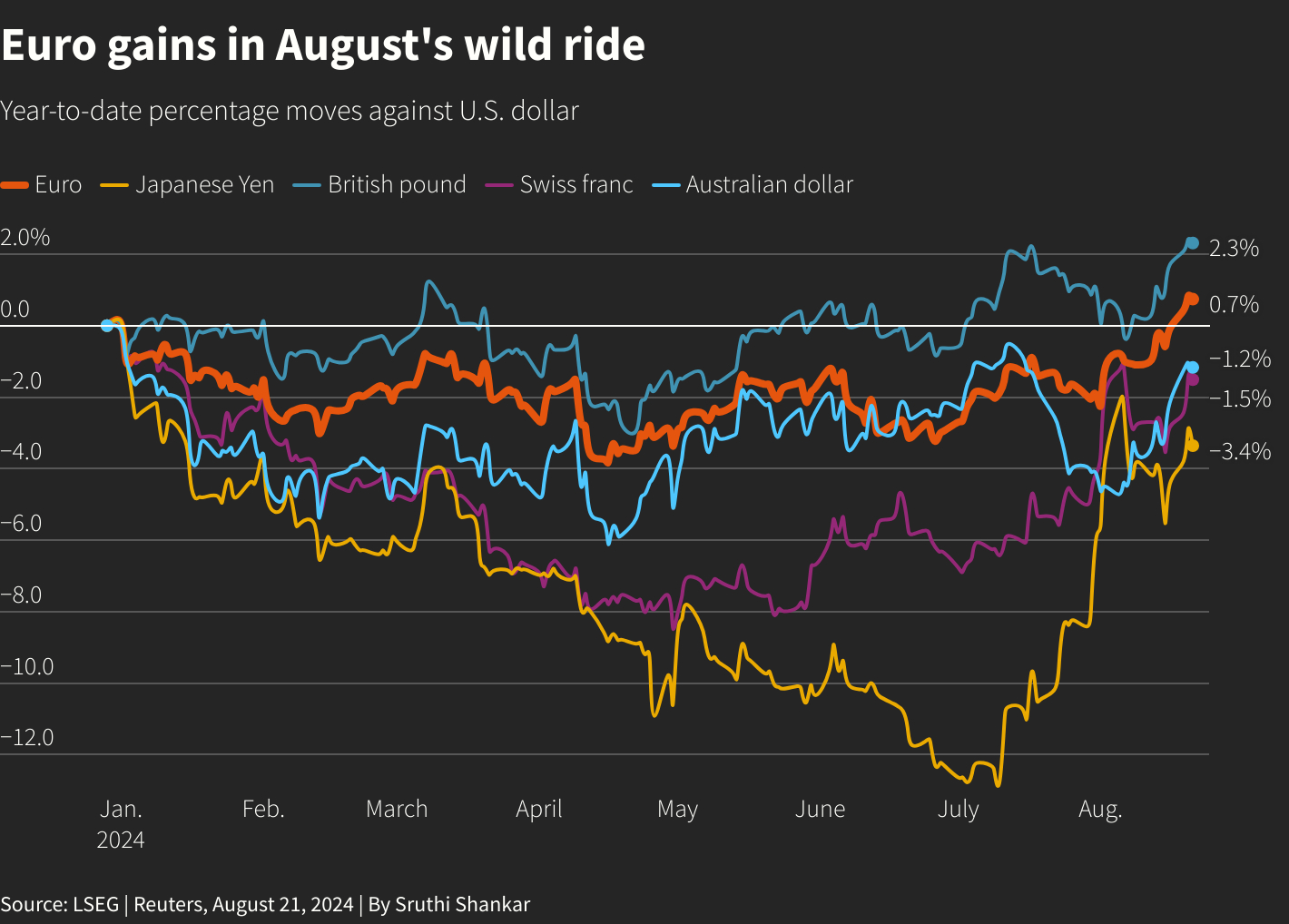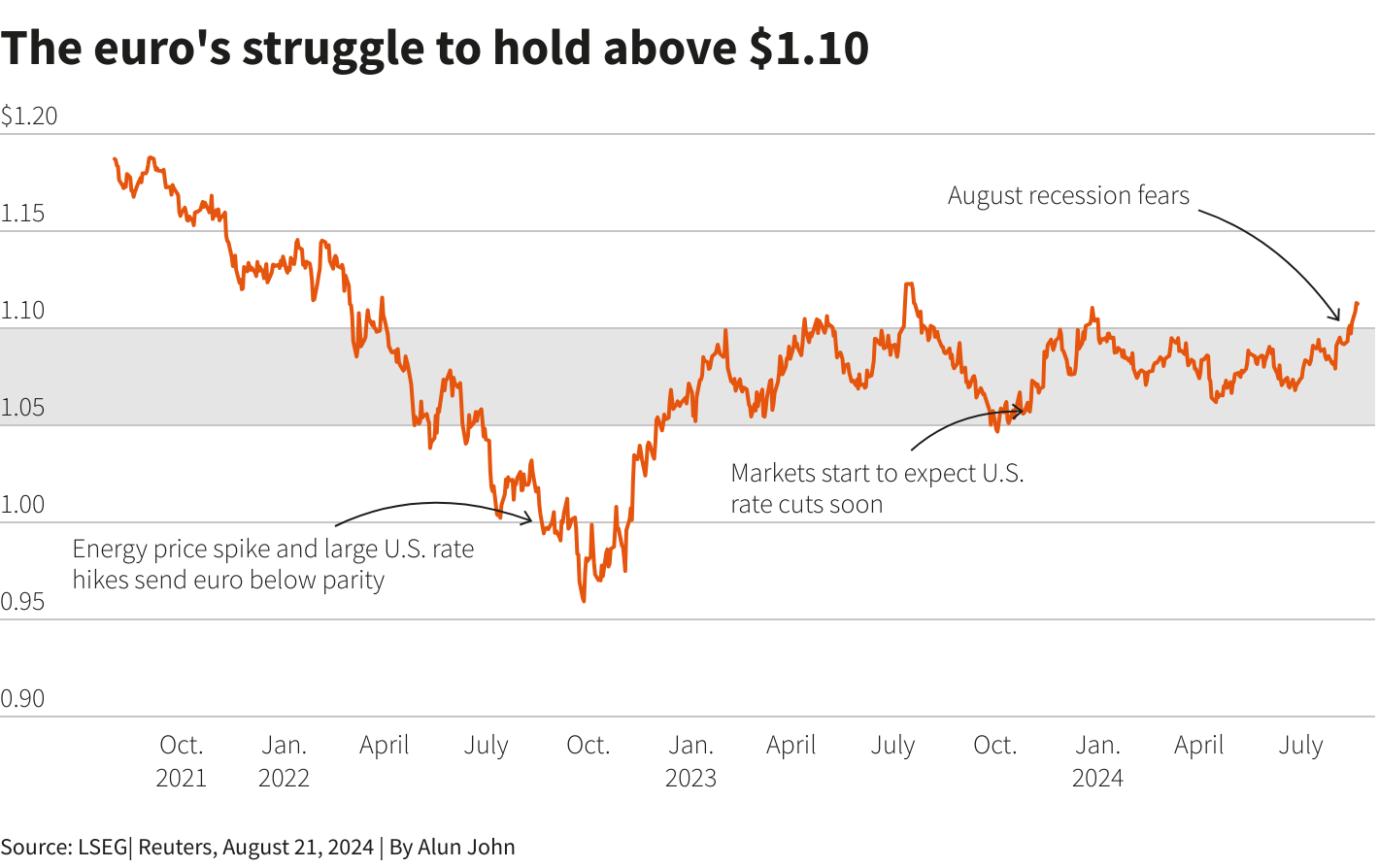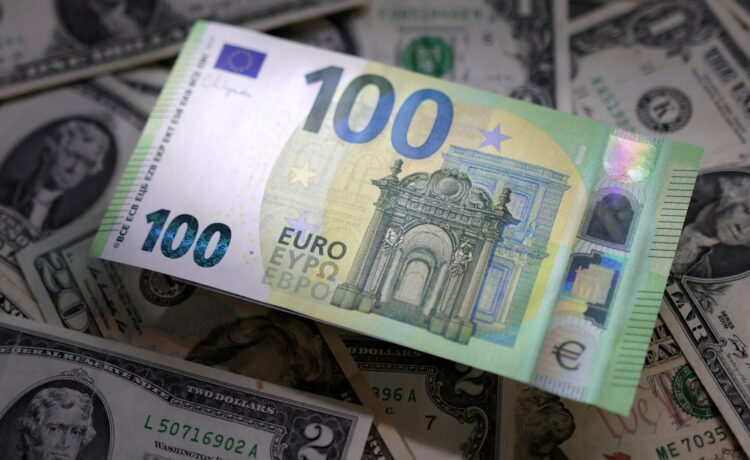Having broken decisively above the symbolic $1.10 level , the euro’s more than 2.5% gain in August sets the currency up for its best month since November.
It’s now the second best performing major currency versus the dollar this year after sterling, and is at its highest in trade-weighted terms on record, though that is also down to weakness in emerging market currencies.

“It’s a rate differential story,” said Commerzbank currency analyst Volkmar Baur.
“Inflation is coming down on both sides (of the Atlantic), but the Fed is expected to move a little bit more aggressively on the way down, and that closes the rate spreads a little bit and gives way for a stronger euro.”
In contrast, traders see 94 bps of Fed cuts across its three remaining meetings this year — implying three 25 bps moves, with a good chance of one larger one. That’s a change of around 30 bps from early August; ECB pricing has moved much less.
This shift followed weak U.S. labour market data, which sparked recession fears and jolted stocks and bonds. Markets have since calmed, but policy easing expectations remain.
For sure, it’s not just the euro that has strengthened against the dollar in August, but the single currency is where there are the fewest complications for traders looking for a relatively safe FX bet.
“We’ve seen some risks taken out from the euro like the French election,” said Salman Ahmed, global head of macro and strategic asset allocation at Fidelity International.
“It’s now becoming a cleaner central bank story.”

GETTING HARDER
From here however, the euro may struggle to make further headway.
It’s at the top of recent trading ranges and there’s less scope for rate differentials to shift further in its favour, said analysts.
Commerzbank forecasts the euro at $1.11 by year-end, unchanged from current levels. ING sees it at $1.12 in a month before falling back to $1.10 and BofA expects $1.12 by year-end.
“My view since the second quarter of 2023 was to play the trading range. You buy the euro at $1.05 and sell when it moves above $1.10,” said Mathieu Savary, chief European investment strategist at BCA Research.
For some, this could even be it for the gains.
“These are the strongest levels for the euro you should expect between now and the end of the year,” said Guy Stear, head of developed markets strategy at the Amundi Investment Institute, who reckons the case for further ECB cuts was more convincing than for the Fed.
In contrast, the next round of U.S. jobs data could show July’s weak report was just a Hurricane Beryl driven blip.

Another complicating factor in the mix is the Nov. 5 U.S. presidential election.
“What could really push euro/dollar above $1.10 and hold it there is a Harris victory and a U.S. slowdown,” she said.
Sign up here.
Reporting by Sruthi Shankar in Bengaluru and Alun John in London, additional reporting by Yoruk Bahceli; editing by Dhara Ranasinghe and Toby Chopra
Our Standards: The Thomson Reuters Trust Principles.

















